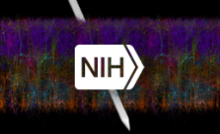
NINDS is inviting researchers to provide comments and advice on gaps and opportunities for research in fundamental neuroscience.
The NIH BRAIN Initiative aims to revolutionize our understanding of the human brain by accelerating the development and application of innovative technologies. Cross-cutting technological innovations in turn stimulate basic research in neuroscience. For instance, dramatic advances in single cell sequencing and spatial transcriptomics facilitated in part by NIH BRAIN funding, have now paved the way for a granular parsing of dopaminergic neurons that may degenerate in Parkinson’s disease. Discoveries from basic research inspire and drive therapeutic breakthroughs for treating neurological disorders, and these efforts underlying tool development and fundamental research provide the backbone of treatments and cures for neurological disease.
The National Institute of Neurological Disorders and Stroke (NINDS), one of the ten Institutes and Centers at the National Institutes of Health (NIH) that make up the NIH BRAIN Initiative, hopes to similarly invest in the next generation of fundamental neuroscience discoveries that yield rich dividends for NINDS’s mission of treating neurological disorders. NINDS is requesting information from the scientific community to understand challenges and opportunities in fundamental neuroscience (FN) research to accelerate our understanding of the normal development, structure and function of the nervous system. NINDS aims to solicit input from a wide range of perspectives and stakeholders who are invested in discovery-based neuroscience questions, and transparently report those findings back to the community.
The input sought by NINDS includes, but is not limited to, comments addressing any or all of the following areas of interest:
-
New ways that NINDS could better support FN
-
Noteworthy cases in which FN research programs were exceptionally successful and to outline the unique aspects in their design
-
Issues that present obstacles or opportunities for the advancement of new areas of FN
-
Whether mechanistic and/or discovery-based research proposals are adequately fostered and ideas to better advance these types of FN research
-
The ability of present NINDS grant mechanisms (e. g., R01, R21, P01, R35, etc.) to advance all areas of FN research, their strengths and weaknesses, and potential for improvement
-
The value of team science approaches to advance FN research
-
The utility, gaps, obstacles, and potential opportunities for using NIH provided tools and resources (e.g., Alliance or IMPC)
-
The need for a strategic planning process (e.g. BRAIN) for any aspect of FN research
-
Topic ideas for a NINDS FN workshop
-
The decision process (including any concerns) to submit an application on any specific area of FN research
To learn more, please visit the NINDS page on Fundamental Neuroscience Research and the full Request for Information (RFI), and consider submitting a response to guide the future of fundamental neuroscience research at NINDS.
